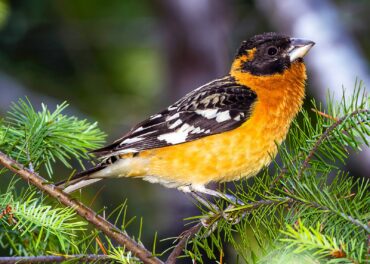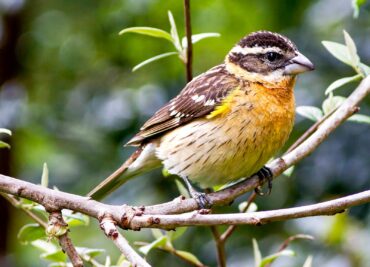
Bird migration is a fascinating phenomenon. About half of the world’s approximately 10,000 bird species are migratory. Some fly short distances to warmer wintering grounds and back to breeding grounds in spring. Others cover thousands of miles twice a year in extraordinary journeys that cross oceans and international borders.
North America is home to four major flyways, or migration routes, that extend from Mexico to the Arctic. From east to west, they are the Atlantic, Mississippi, Central and Pacific flyways. Every year, millions of birds traverse their respective flyways between wintering grounds in the South and breeding grounds in the North.
Here in West Sound, numerous waterfowl species winter in and around the Salish Sea to avoid icy waterways on their Arctic breeding grounds. Mountain songbirds descend to the lowlands before returning to higher elevations in the spring. During fall and spring migrations, many other species pass through West Sound’s lane of the Pacific Flyway to and from breeding grounds farther north.
Some species end their annual spring migration here. At least two dozen types of songbirds spend four to six months in West Sound to raise their families before returning to warmer regions in the South. Birders look forward to the arrival of these amazing birds, which often have beautiful songs and vibrant plumage and signal that summer is near.
One of the most highly anticipated spring migrants to Washington is the colorful and spirited black-headed grosbeak. Locally, it is reasonably common and one of the last migrant songbirds to show up for breeding duties. It arrives in early May and departs in late August or early September.

Wintering in the tropical lowlands of Mexico, the black-headed grosbeak breeds across most of the American West and a portion of southwestern Canada. It can be found almost anywhere there is water, from streamside mountain forests to desert oases and everywhere in between.
The black-headed grosbeak is a highly attractive bird. Striking males are black and orange, with white wing spots and a yellow patch on the belly. It takes two years for males to develop their full adult plumage. Females and juveniles are paler, with a prominent white stripe on the side of the head and thin, dark streaking on the belly. All have a thick bill and yellow underwings, which are visible in flight.
A regular visitor to backyard seed and suet feeders, the stocky, black-headed grosbeak arrives in style. It makes its presence known with a pleasant melodic song, which sounds similar to the American robin, and is belted out from the treetops by males. Females sing a simpler song.
A gregarious bird, it quickly asserts itself at the top of the backyard songbird hierarchy. About the size of a robin, it’s among the largest customers at feeding stations, though it may yield to the bill shove of a pileated woodpecker that isn’t willing to share its suet.
While the black-headed grosbeak can be found virtually anywhere in Washington near water, its preferred habitat consists of mixed forests with mature deciduous trees in riparian areas. Rural backyards with suet and sunflower seed feeders and water features are sure to attract this fan favorite.
The oversized bill of the black-headed grosbeak is an ideal tool for breaking open seeds and crushing beetles and snail shells. Its typical diet consists of seeds, insects, spiders, snails and berries.
Most of its food is obtained from foraging in treetops and shrubby areas. It occasionally feeds on the ground and sometimes snatches flying insects out of midair. While wintering in Central Mexico, the black-headed grosbeak also eats monarch butterflies, which are poisonous to most birds.
The female builds a loose nest of twigs concealed by leaves on an outer branch of a tree, about 25 feet above ground level. The loose construction is thought to provide natural cooling to the nest. Clutch size is two to five eggs and both parents share the duties of incubating the eggs and raising nestlings, a process that takes about a month.
Fledglings are unable to fly for two weeks. Parents assist them until they can fly and feed themselves independently. During the summer, juveniles join the gregarious blitz of colorful feathers energetically zipping through backyards, a bird watcher’s delight that is greatly missed in fall.
While many migratory songbirds are suffering from the effects of habitat loss, the black-headed grosbeak can adapt to a changing environment. A diverse diet and the ability to nest in a variety of places allow it to thrive while specialized species are struggling. However, nest predation from corvids, such as Steller’s jays, can be problematic.
For four months of the year, the black-headed grosbeak is hard to ignore. A family of grosbeaks can provide endless entertainment throughout the summer until it’s time to head south. Enjoy the show while it’s in town.





























